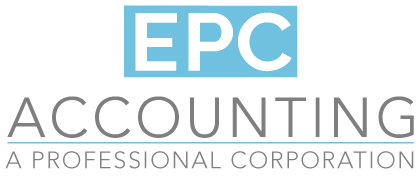Ah, January. The start of a new year. For some people it means making resolutions, for accountants it means being mindful of the new tax regulations that come into play.
This year, there are four major changes brought in by the federal government, two of which will affect almost everybody, one of which will affect some people but only in a minor way and the third will affect very few people, but those whom it affects will feel it.
Canada Pension Plan Contributions
According to Statistics Canada: In 2012, 33% of employed women and 24% of employed men aged 25 to 54 were covered by defined benefit (DB) plans. Statscan says women had higher DB coverage rates because they were predominantly employed in sectors with higher coverage rates such as educational services, health and social assistance, and public administration. Also from Statscan: in 1977, 52% of men had a defined benefit plan. That is a really steep drop.
If everybody was contributing the right amount to their retirement funds, CPP would be enough, but of course not enough of us are saving enough.
CPP when you retire
The most anybody can get from CPP right now is about $1,150 a month. On average, the amount received is $660. If CPP is just a top up, that’s great. But I don’t know anybody who can live decently in Toronto on $1,100 a month. Even in a best-case scenario where you have a couple who are both maxed out on CPP, that’s only $2,200. With the average one-bedroom rental in Toronto at $2,000 or so, there’s not much left for anything else, which is why the government is slowing increasing rates.
CPP contributions
For many years, employers and employees have been paying a total of 9.9% of wages or income up to about $57,000 to CPP, including those who are self-employed.
As of 2019, the rate is going from 9.9% to 10.2% on any income between $3,500 and $57,400. That will creep up until 2023 when the rate will be 11.9%. For people who are earning over $57,400, the contribution will go up by $161.70 this year but in 2023, the difference will be over $1,000.
This will be felt more by those who are self-employed. For those who have a salaried position, the employer will take care of half while the employee covers the other half. The big change will be psychological – the CPP contribution rate is going over 10%! This happened a few years ago, when Ontario pushed its tax number up over 50% for top earners (and then only on the income earned over $206,000). It only went up a little, but going from slightly less than 50% to slightly more than 50% felt like a big jump.
Employment Insurance Premiums
The rate that an employer used to pay was 1.66% and as of January 1, that has been lowered to 1.62%.
At first glance it looks like employers will be contributing less, but there is a catch. The old maximum salary an employer contributed to EI on was $51,000. Now the cap is $53,100 per employee. As a result, if you have employees who are earning more than $53,100, it’s now costing you an additional $13.62 per year, per employee.
Climate Action Incentive
You’ve likely read quite a bit about the recent actions on climate change by many levels of government. The most tangible change you’ll be seeing this year is a new “Climate action incentive”. This is a refundable credit available to residents of Ontario, Manitoba, Saskatchewan, and New Brunswick. The credit provides for a one-time payment of $154 for an individual or more for a family and individuals living outside a major city. This credit is provided as part of your tax refund for the year.
Corporate Tax and Passive Income
The corporate tax rate is changing dropping to 9% from 10%, which the CBC estimates will leave business owners with extra $1,600 in their pockets per year.
However, if you run a business that generates more than $50,000 in passive income in addition to regular business income, that passive income will start to impact the overall corporate tax rate you pay. This isn’t common except for large private companies.
Here’s a good article from the Post that explains it.

